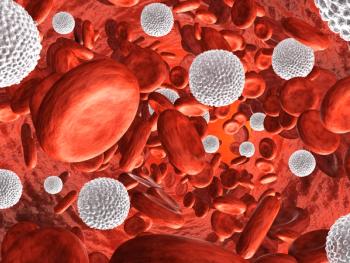
Miami Breast Cancer Conference® Abstracts Supplement
- 41st Annual Miami Breast Cancer Conference® - Abstracts
- Volume 38
- Issue 4
- Pages: 25-26
22 Updated Results From VERITAC Evaluating Vepdegestrant, a PROteolysis TArgeting Chimera (PROTAC) Estrogen Receptor (ER) Degrader, in ER-Positive/Human Epidermal Growth Factor Receptor 2 (HER2)–Negative Advanced Breast Cancer
Background
Vepdegestrant (ARV-471) is an oral proteolysis-targeting chimeric (PROTAC) estrogen receptor (ER) degrader with activity toward wild-type and mutant ER. The phase 2 expansion (VERITAC) of a phase 1/2 study tested 2 vepdegestrant doses (200 mg once daily and 500 mg once daily) in heavily pretreated patients with ER+/HER2-negative (HER2–) advanced breast cancer. Vepdegestrant at 200 mg daily was selected as the phase 3 monotherapy dose based on comparable efficacy and favorable tolerability vs 500 mg daily and robust ER degradation (data cutoff of June 6, 2022). We present updated data for the vepdegestrant 200-mg daily dose cohort after 12 additional months of follow-up from the first report.
Methods
Patients with ER+/HER2– locally advanced/metastatic breast cancer who had received 1 or more prior endocrine therapies for 6 months or more, at least 1 CDK4/6 inhibitor, and less than 1 chemotherapy regimen were eligible. The primary end point was clinical benefit rate (CBR; rate of confirmed complete response, partial response, or stable disease at 24 weeks or more).
Results
As of June 6, 2023, 35 patients received vepdegestrant at 200 mg daily; 34 (97.1%) were female, and the median age was 63 years (range, 42-79). Patients had received a median of 4 prior regimens (range, 1-9) in any setting (CDK4/6 inhibitors, 100%; aromatase inhibitors, 88.6%; fulvestrant, 74.3%; chemotherapy, 74.3% [45.7% in metastatic setting]). CBR was 37.1% (95% CI, 21.5-55.1) in all evaluable patients (n = 35), and the objective response rate was 8.3% (95% CI, 1.0-27.0) in 24 patients with measurable disease at baseline. Median progression-free survival in all evaluable patients was 3.5 months (95% CI, 1.8-8.2). A total of 14 patients in the 200 mg dose cohort received treatment for at least 24 weeks (4 for at least 48 weeks) with 1 patient ongoing. No patients required a dose reduction due to a treatment-emergent adverse event (TEAE); 2 (5.7%) patients discontinued vepdegestrant due to TEAEs (grade 3 QT prolongation and grade 3 anemia). The most common treatment-related AEs (15% or more) were fatigue (43%), hot flush (20%), and nausea (17%); all were grade 1/2. Substantial on-treatment decreases in mutant ESR1 circulating tumor DNA levels were observed and sustained for multiple treatment cycles.
Conclusions
Durable clinical activity with vepdegestrant at 200 mg daily was seen in heavily pretreated patients with ER+/HER2– advanced breast cancer. Vepdegestrant at 200 mg daily continued to show
a favorable safety profile. The ongoing phase 3 VERITAC-2
study (NCT05654623) is evaluating vepdegestrant at 200 mg daily vs fulvestrant in patients with ER+/HER2– advanced breast cancer after prior combination CDK4/6 inhibitor therapy and endocrine therapy.
Articles in this issue
Newsletter
Stay up to date on recent advances in the multidisciplinary approach to cancer.

















































































